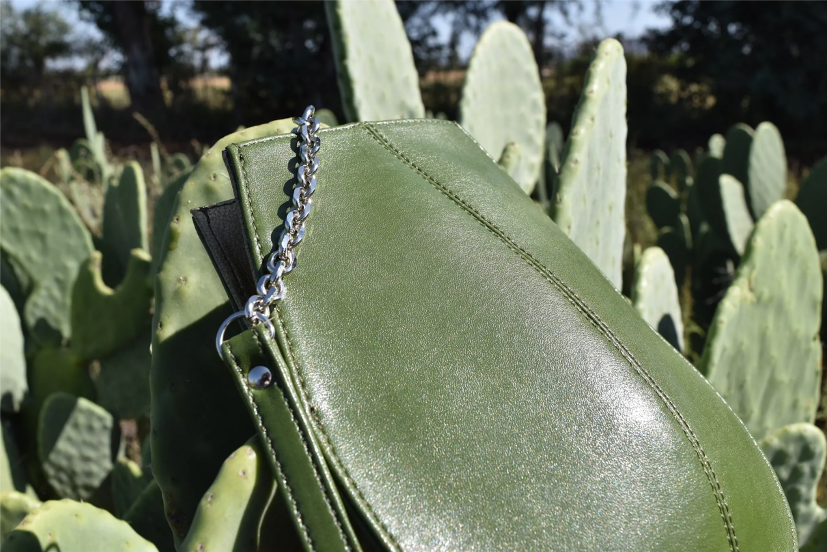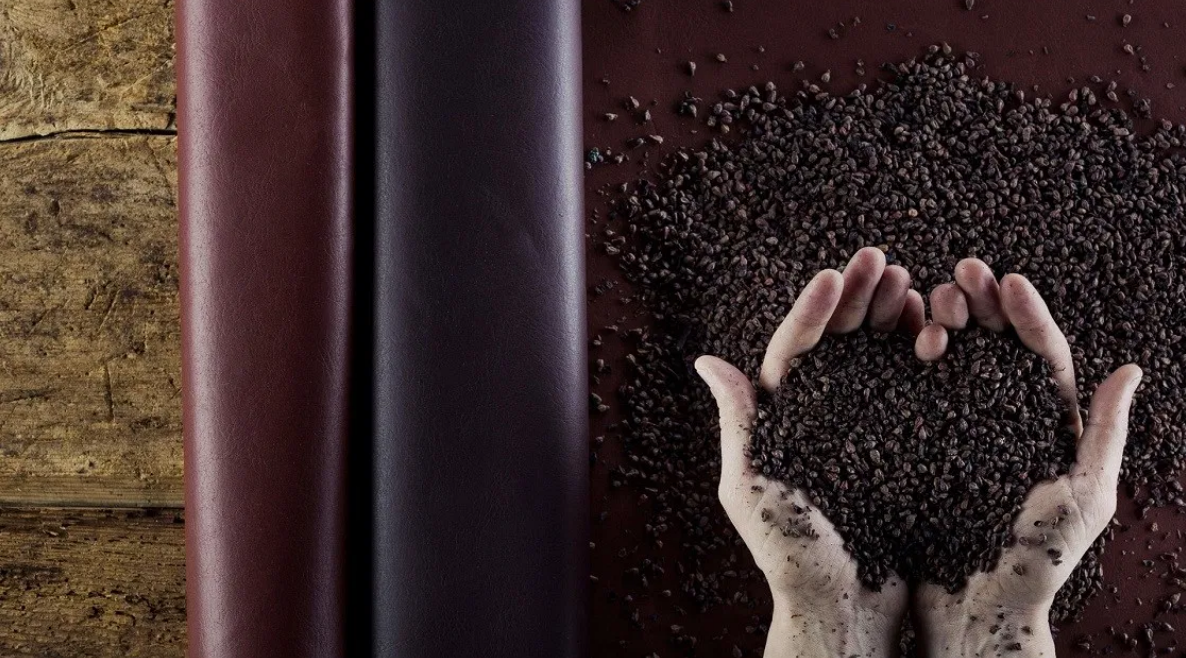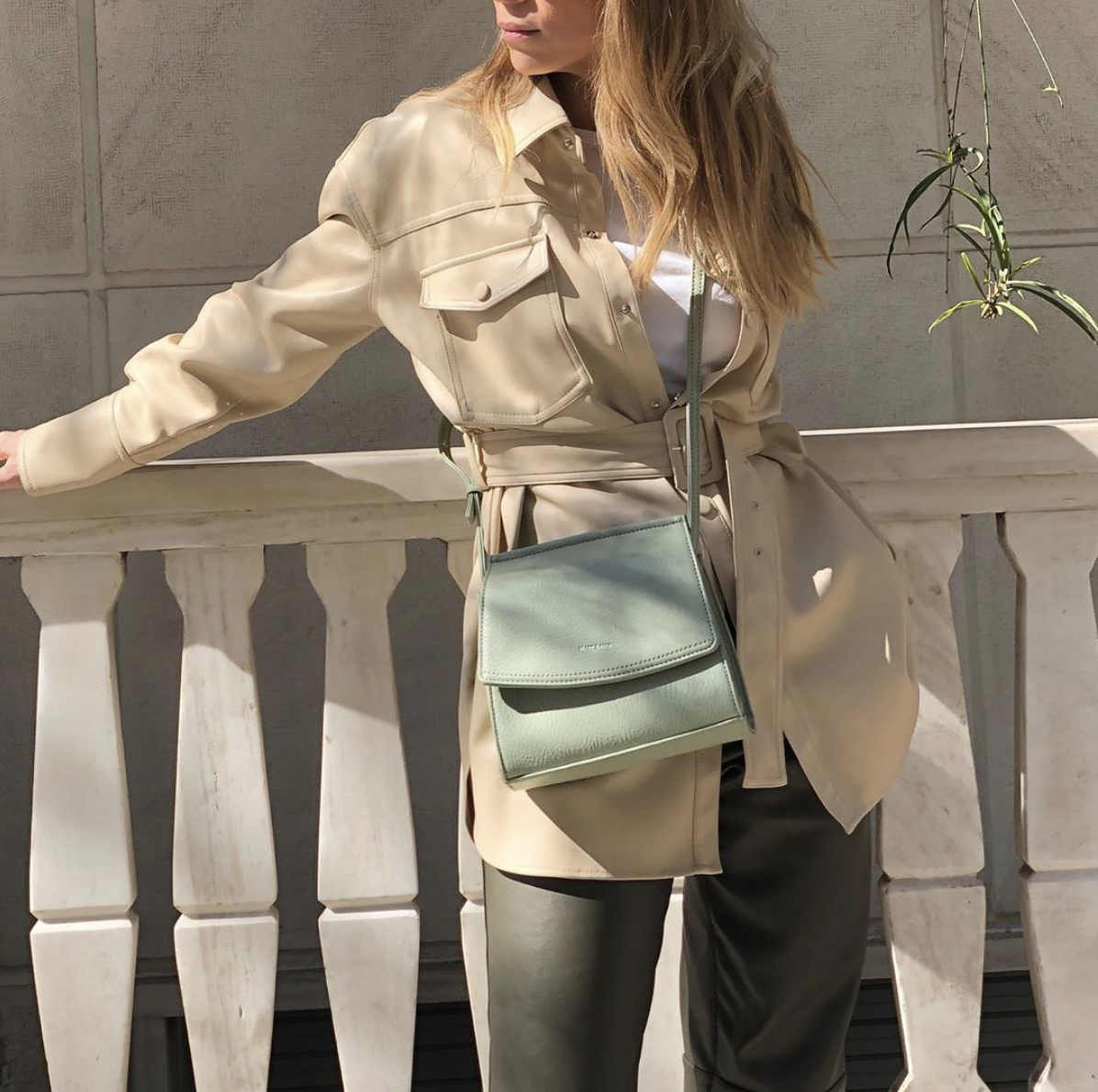Vegan Leather and the Conscious Lifestyle
Vegan leather has gained tremendous popularity among environmentally conscious consumers since the 1990s. For context, let’s look at The Vegan Society’s official definition of veganism:
“Veganism is a way of living which seeks to exclude, as far as possible and practicable, all forms of exploitation of, and cruelty to, animals for food, clothing or any other purpose.”
Vegan leather, then, is a leather alternative that isn’t made from animal skin. It is essentially made of polyurethane, which is a type of polymer/plastic.
The Great Debate

DESSERTO Cactus Vegan Leather
Vegan leather made of synthetic materials may be solving one issue by following a cruelty-free mandate, but it gives rise to a potential harmful side effect to our environment. It is argued that the production of vegan leather uses immense levels of toxic substances which aren’t fully biodegradable. These synthetic substances release particles which are then ingested by animals. In turn, the process hinders our food chain and the notion of ‘vegan’ leather becomes a blurred line.
According to the Higg Materials Sustainability Index, cow leather is still three times as harmful to the environment as vegan leather; so there are many positive benefits of using faux materials. Pro leather activists may argue that cow leather is natural and therefore better for the environment, but the bottom line is that faux leather has only a third of the environmental impact compared to that of animal leather.
Vegan leather is evidently less harmful to the planet. There are debates surrounding the quality of the imitation leather, and it really depends on the usage and longevity of the item. Still, studies lead us towards the verdict that cruelty free materials are overall the better, more eco-friendly option.
Choosing Materials and Textiles

VEGEA Vegan Leather
Vegan or faux leather is ultimately an alternative option for fashion labels and consumers. It is most often made from polyurethane. This material is more readily available in large quantities, and an item can be made to order on short notice. The list of materials to make vegan leather include:
- Cork
- PVC or Vinyl
- Recycled rubber
- Wax cotton
- Apple peels
- Pineapple leaves (Piñatex)
- Cacti
- Grapes, oils and fibers

Matt and Nat
Indeed, faux leather can be made from a cactus plant – a new sustainable and innovative alternative developed in Mexico. Using nopal (a type of cactus), founders Adrian Lopez Velarde and Marte Cazarez, were able to create this organic leather that hails to have high resistance and durability. With its unique brand label, Desserto, it not only pays homage to the Mexican Republic, but makes use of one of the most abundant plants in the region – cacti. With its breathable properties, this ingenuity squares up as almost a 1:1 against the “real” counterpart. In conversation with the creators of the cacti leather, they reveal that the sustainable nature of the product is what can permeate global markets like wildfire. Many other companies follow suit, like Matt & Nat leather goods, and Doc Martens vegan line of shoes.
Making eco-conscious choices in the beginning stages of the design process can reap huge rewards in the fashion industry. Many ethical companies are looking towards alternative materials; The Unique Group offers faux leather patches and labels to clients – an ideal fabric for pants and bags.
Where Do We Fit In?
Consumers argue whether vegan leather can truly be long lasting, but there is no doubt that high-end faux leather is now practically indistinguishable from the real thing. With new technologies in the industry, it’s hard to tell the difference nowadays.
With products such as cactus leather making it into the markets, it’s almost impossible to turn a blind eye on the alternative vegan leather choices available to end-consumers.
